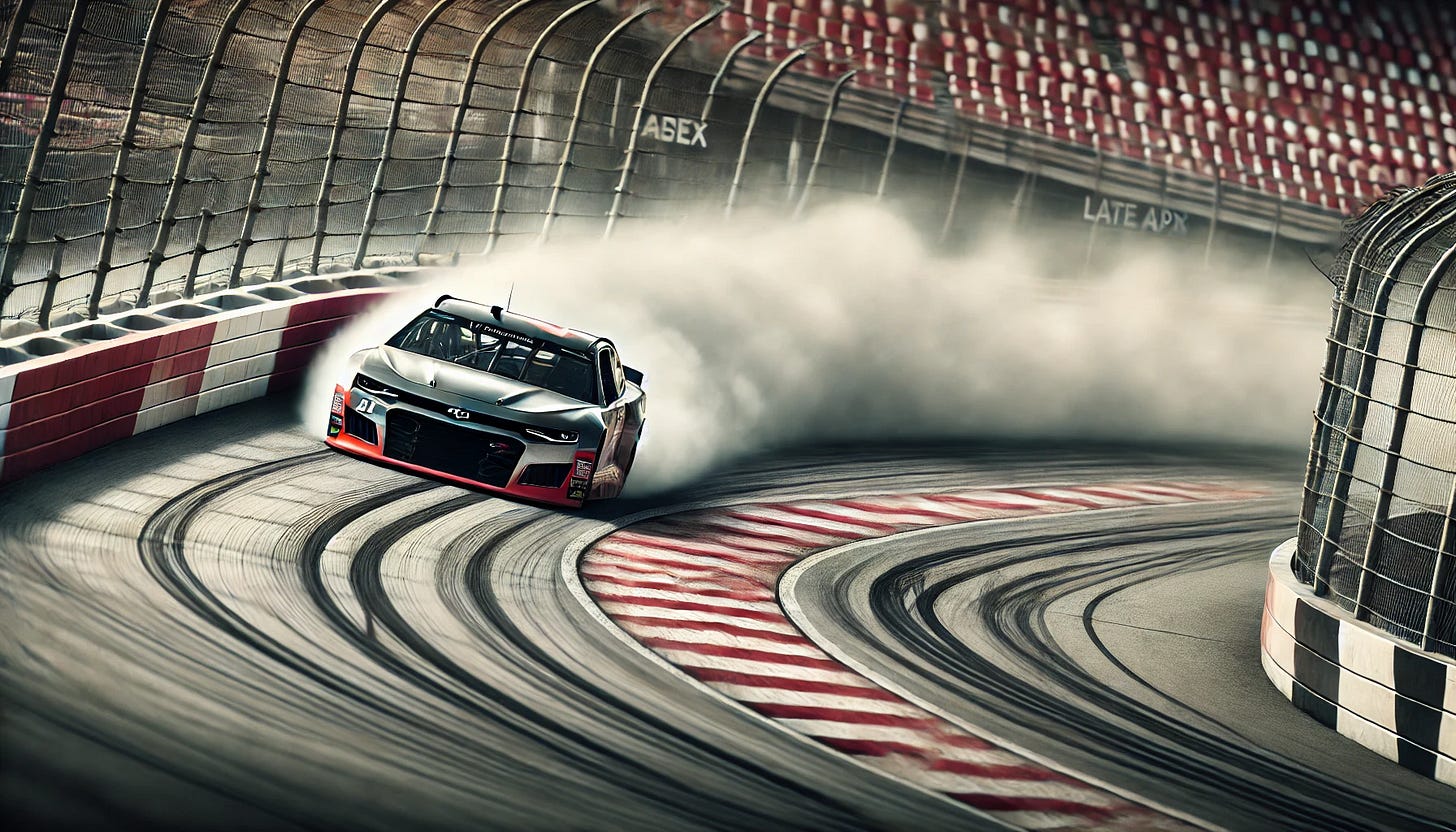Mastering the Late Apex: A Cornering Strategy for Speed and Control
“The late apex is more than just a racing technique; it represents a mindset.”~from the novella “Chasing Shadows: Pulp Racing.”
Mastering the Late Apex: A Cornering Strategy for Speed and Control
In the novella, “Chasing Shadows: Pulp Racing,” Evan Carter is returning to the race car circuit after a 10-year layoff. The competition is fierce. He needs all the help he can get. An aging legend known as “The King,” teaches him about the “Late Apex Turn,” a delayed, wide cornering technique that can yield big results. So what exactly is it?
In high-performance motorsport, the late apex technique is a critical cornering strategy that allows drivers to optimize speed and control through a turn. Instead of hitting the apex—the innermost point of the curve—early, drivers delay their turn-in, reaching the apex later in the corner. This approach results in a straighter exit path, enabling earlier acceleration and higher speeds on the straight that follows.
The late apex technique is particularly useful on tracks with long straightaways after sharp corners. By entering the turn from the outside and braking deeper into the curve, drivers reduce the angle needed to exit the corner, allowing them to apply the throttle sooner. This contrasts with the early apex, where turning in too soon forces a tighter exit, often requiring extra corrections or reduced speed to avoid running wide.
The Science Behind the Late Apex
The late apex maximizes a car’s grip and stability by shifting braking force into the earlier phase of the turn while prioritizing acceleration on exit. Because racing cars perform best under smooth weight transfer and optimal tire contact, a later apex minimizes mid-corner instability and ensures the car is positioned correctly for maximum exit speed. The technique is especially advantageous in wet conditions or when defending against an overtaking competitor, as it provides better control and adaptability.
Who Made the Late Apex Famous?
Many professional drivers, from Formula 1 legends like Ayrton Senna to endurance racing icons, have mastered the late apex to gain a competitive edge. This technique is a staple in advanced driving schools and is frequently emphasized in sports car and motorcycle racing. The late apex allows for greater flexibility in adjusting to track conditions, making it a preferred approach in both high-speed circuits and technical courses.
The Late Apex in “Chasing Shadows”
In “Chasing Shadows,” protagonist Evan is returning to the racing world after a ten-year hiatus due to illness. Skeptical teammates and financial pressures weigh on him, making every practice session crucial. During one of these sessions, Leo Santini, the skeptical mechanic, is absent, leaving room for a visit from The King, a retired racing champion.
The King, known for his dominance in stock car racing, recognizes Evan’s struggles and takes him under his wing, teaching him the late apex technique. This moment becomes a turning point, as Evan absorbs the lesson and refines his racing strategy. The technique’s focus on patience and precise timing mirrors Evan’s personal journey—learning to trust himself again, push forward despite doubt, and reclaim his position on the track.
The late apex is more than just a racing technique; it represents a mindset. In “Chasing Shadows,” Evan’s mastery of the late apex is symbolic of his fight to regain control—not just of his car, but of his life.
Sources
1. “Speed Secrets: Professional Race Driving Techniques” by Ross Bentley
2. “The Perfect Corner: A Driver’s Step-by-Step Guide to Finding Their Own Optimal Line Through the Physics of Racing” by Adam Brouillard
3. “Secrets of Solo Racing: Expert Techniques for Autocross and Time Trials” by Henry A. Watts


